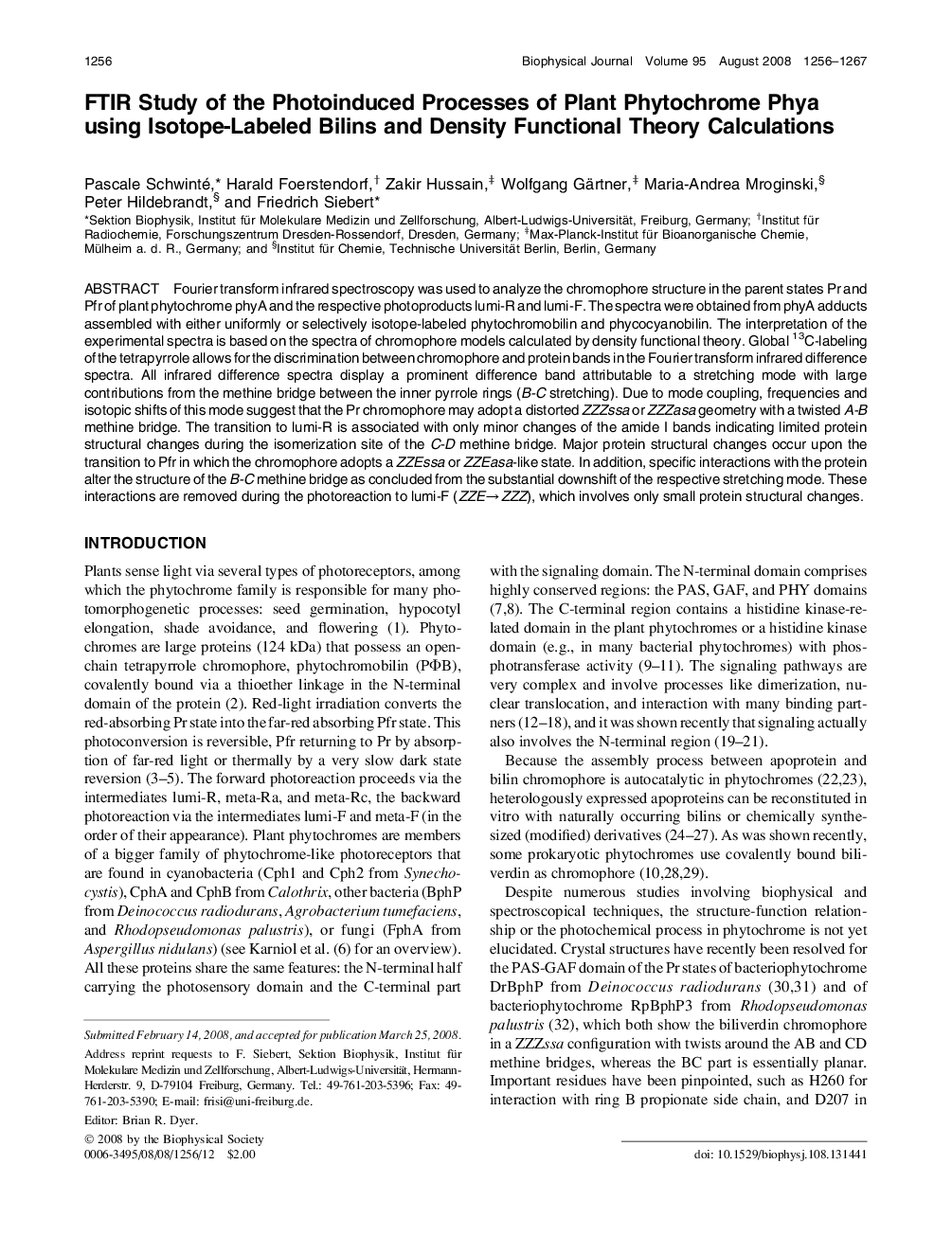| کد مقاله | کد نشریه | سال انتشار | مقاله انگلیسی | نسخه تمام متن |
|---|---|---|---|---|
| 1954906 | 1057806 | 2008 | 12 صفحه PDF | دانلود رایگان |

Fourier transform infrared spectroscopy was used to analyze the chromophore structure in the parent states Pr and Pfr of plant phytochrome phyA and the respective photoproducts lumi-R and lumi-F. The spectra were obtained from phyA adducts assembled with either uniformly or selectively isotope-labeled phytochromobilin and phycocyanobilin. The interpretation of the experimental spectra is based on the spectra of chromophore models calculated by density functional theory. Global 13C-labeling of the tetrapyrrole allows for the discrimination between chromophore and protein bands in the Fourier transform infrared difference spectra. All infrared difference spectra display a prominent difference band attributable to a stretching mode with large contributions from the methine bridge between the inner pyrrole rings (B-C stretching). Due to mode coupling, frequencies and isotopic shifts of this mode suggest that the Pr chromophore may adopt a distorted ZZZssa or ZZZasa geometry with a twisted A-B methine bridge. The transition to lumi-R is associated with only minor changes of the amide I bands indicating limited protein structural changes during the isomerization site of the C-D methine bridge. Major protein structural changes occur upon the transition to Pfr in which the chromophore adopts a ZZEssa or ZZEasa-like state. In addition, specific interactions with the protein alter the structure of the B-C methine bridge as concluded from the substantial downshift of the respective stretching mode. These interactions are removed during the photoreaction to lumi-F (ZZE→ZZZ), which involves only small protein structural changes.
Journal: - Volume 95, Issue 3, 1 August 2008, Pages 1256–1267